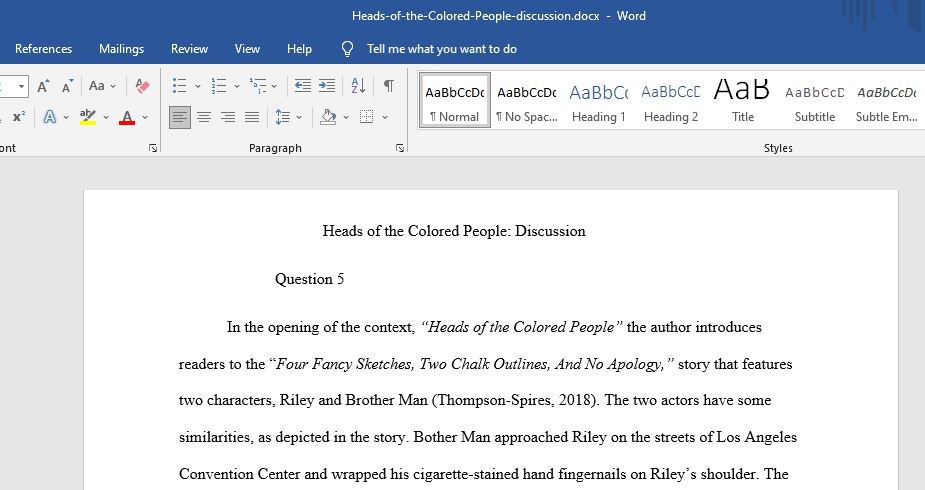Heads of the Colored People: Discussion
DIRECTIONS:
For this discussion, answer 3 of the following question in as much detail as you can. Your answers to each questions should be at least 250-300 words.
- In “Belles Lettres,” how does the feud between Dr. Lucinda Johnston and Dr. Monica Willis highlight the challenges upper class minority families’ face? Which letter did you find the most offensive and yet comical, and how do the two women reconcile?
- Fatima and Christina are now adults in “The Body’s Defenses Against Itself,” as Fatima reminisces on childhood we learn more about what really happened in their school-aged years. What did Christina’s mom call “the body’s defense against itself?” In closing, what does Fatima mean when she says, “I’ve been doing this yoga since I was a child?”
- In “The Subject of Consumption,” Lisbeth and Ryan are fruitarians practicing detachment parenting while filming a reality TV show. While the tension in their relationship is sensed early on, it does not reflect the love the couple had in years prior. What is the main issue in their relationship now?
- In “A Conversation about Bread,” we hear more of Brian’s story and spend time with him and his classmate Eldwin as they complete an assignment. Another character we see but do not hear from is the white woman listening in on their exchange. Thompson-Spires writes: If Eldwin cared about the white woman—and he might have at some level, but it wasn’t a visible level—he would have seen that she was now very interested in the conversation. His theory, he had told Brian before, involved learning to ignore the white gaze until it no longer came to mind. Then, “and only then,” he’d said, “black people can be free from all that double consciousness bull.” How would you define the “white gaze?” Do you believe it is possible for minorities to live outside of the white gaze?
- In the opening story, “Heads of the Colored People: Four Fancy Sketches, Two Chalk Outlines, And No Apology,” what similarities arise in both Riley and Brother Man? In the height of the conflict between the two men Thompson-Spires writes, “it was just like Naruto v. Pain, only with two black guys, so you couldn’t tell if either one was the hero.” Discuss why their race would help dictate knowing which was the hero.
Filter replies by unread
Answer preview:
Words:850

